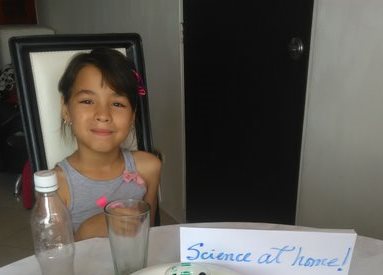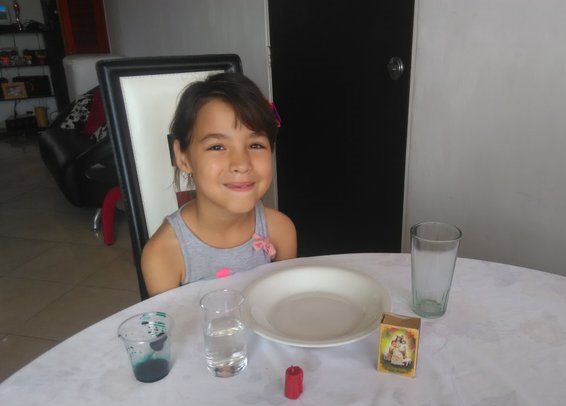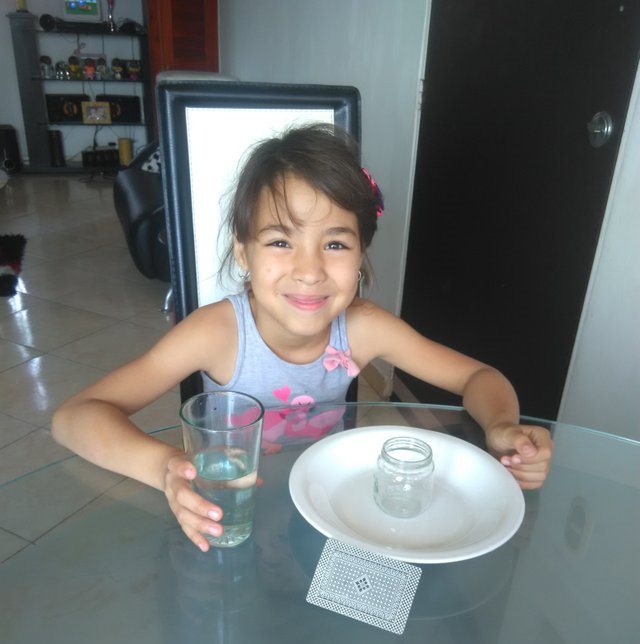
Here we go;
Before beginning with the practice let's study the theory first.
What is Air Pressure? Concept:
The air is composed of different particles and these have a specific mass. The set of all of them is enveloping the Earth, generating a weight on it. When these particles collide on a surface they generate a force called pressure.
The pressure of the air influences the weather, it will be different for sunny days than for rain, and it changes with the passing of the hours. That's why we can wake up with a sunny day and lie down listening to the rain.
There are pressure gauges. In the case of weather, the pressure is measured with a barometer.
And how can we explain this so that the children understand it?
Building a barometer is very simple and we can explain how the air changes pressure. Also, if we use it during different days when the weather is different, sunny or cloudy, we will see that the marker changes.
We can also explain that air has strength and this is because it has weight. That is why the branches of trees break in windy days because in this case, having greater speed, the force will be greater.
Having said that, let's start with the fun;
The effect of the atmospheric pressure
Today we are going to see, in a simple way, the effect that atmospheric pressure exerts on water. It is not a dangerous experiment, but children will need the supervision of an adult to do it, since we will have to use a lighter. The materials are easy to find at home:

Materials:
A candle.
A lighter or matches.
A glass of tube.
A deep plate
.Water.
Colorant
Process:
We pour water on the plate, at a level where, when putting the candle on top, the water does not quench the flame.
We place the candle carefully on the plate and light it with the lighter (or a match).
When the flame is stable, cover the candle with the glass.
We will observe that little by little the flame is extinguished, due to the limited oxygen inside the glass. Finally, the flame will go out and the glass will "absorb" part of the water in the dish.
Why does this happen?
The air inside the glass is hot, because the flame causes the gas around it to reach a high temperature, expanding. When the candle goes out (due to lack of oxygen), the temperature drops drastically, causing the gas inside the vessel to compress, while reducing its pressure. This is why the water "rises", because the external atmospheric pressure "pushes" it until it is equal to the internal pressure, besides occupying the space that the gas has left empty when compressed.
Let's continue with the experiments:
Magic with a full glass of water and a Playing Card!
It is a simple experiment that does not entail any danger and very proper to awaken the curiosity of children.
Materials:
A glass cup
A Playing Card
Water

Process:
We take a glass and fill it with water. Next, a card is placed on top and pressed lightly. With this gesture, a small part of the water is spilled while the letter creates a small pressure deficit inside the glass. Little but enough to notice how the cardboard is no longer flat but slightly concave due to the small excess of atmospheric pressure. We turn the glass carefully and see that the water does not spill.
Why does this happen?
hat happens is that the pressure exerted by the air outside the vessel is greater than that exerted by the water inside it, so it is retained and does not spill. It can be demonstrated the existence of atmospheric pressure and that it does not it only acts vertically downwards, but in any direction.
Experiment of the bottle with a hole.
Plastic bottles give a lot of play in the world of home experiments. This time we will use one to do a classic experiment with which we will learn about air pressure.
Materials:
A plastic bottle with a stopper.
An auger, a thumbtack, a hot nail or any tool capable of making a small hole in the plastic of the bottle.
Water.
During the experiment water is spilled, so it must be done in the sink, in a basin or outdoors.
Process:
With the tool you choose, make a small hole on the side of the bottle, on the bottom.
Fill the water bottle (covering the hole with your finger) and screw the cap.
Remove your finger from the hole and observe carefully. You will notice that a little water escapes through the hole, but then the flow stops completely.
Squeeze the bottle and although the plug is screwed the water will flow.
Unscrew the plug and you will see how the water will come out through the hole.
Why does this happen?
The outside air is always putting pressure on the water in the hole, which helps keep it inside the bottle. However, the indoor air exerts pressure on the water column, pushing it and favoring the liquid coming out of the hole.
When the bottle is open, the air inside is at the same pressure as the outside air, but what happens when the plug is screwed on? the pressure inside the bottle is less than the outside pressure, so it pushes and causes the liquid does not leave the bottle.



Reference Pages:
Source
Copying and pasting previous posts or significant parts there of could be seen as spam when:
Spam is discouraged by the community and may result in the account being Blacklisted.
Please refrain from copying and pasting previous posts going forward. If you believe this comment is in error, please contact us in #appeals in Discord.